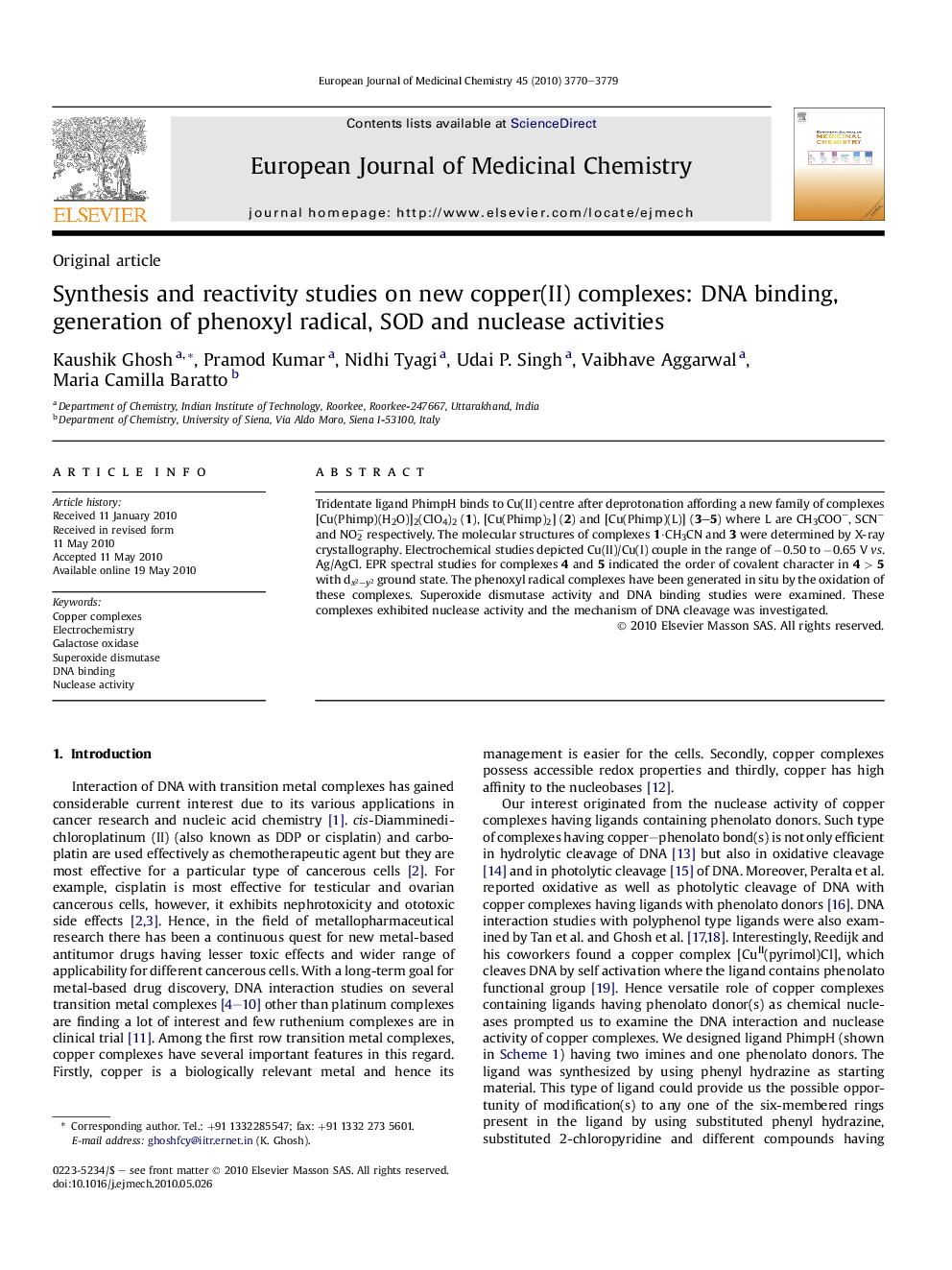| Article ID | Journal | Published Year | Pages | File Type |
|---|---|---|---|---|
| 1394767 | European Journal of Medicinal Chemistry | 2010 | 10 Pages |
Tridentate ligand PhimpH binds to Cu(II) centre after deprotonation affording a new family of complexes [Cu(Phimp)(H2O)]2(ClO4)2 (1), [Cu(Phimp)2] (2) and [Cu(Phimp)(L)] (3–5) where L are CH3COO−, SCN− and NO2− respectively. The molecular structures of complexes 1·CH3CN and 3 were determined by X-ray crystallography. Electrochemical studies depicted Cu(II)/Cu(I) couple in the range of −0.50 to −0.65 V vs. Ag/AgCl. EPR spectral studies for complexes 4 and 5 indicated the order of covalent character in 4 > 5 with dx2−y2 ground state. The phenoxyl radical complexes have been generated in situ by the oxidation of these complexes. Superoxide dismutase activity and DNA binding studies were examined. These complexes exhibited nuclease activity and the mechanism of DNA cleavage was investigated.
Graphical abstractNovel copper complexes were synthesized by a tridentate ligand having phenolato, pyridine and azomethine nitrogen donors. Phenoxyl and nuclease activities were investigated.Figure optionsDownload full-size imageDownload as PowerPoint slide
